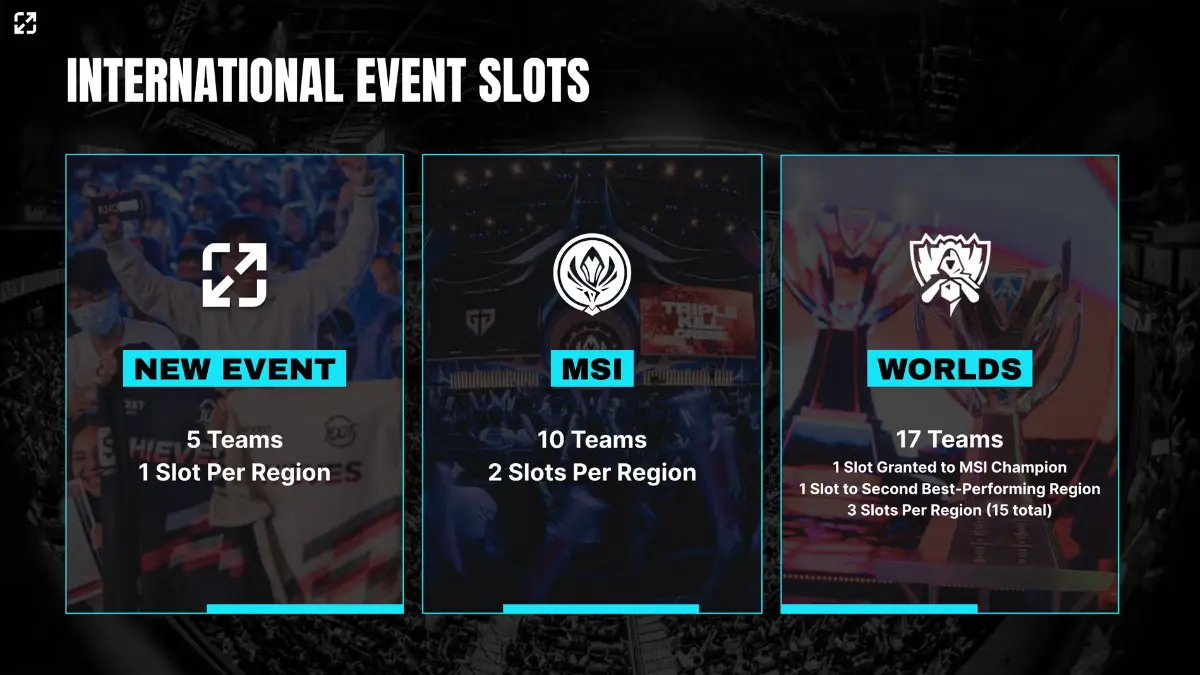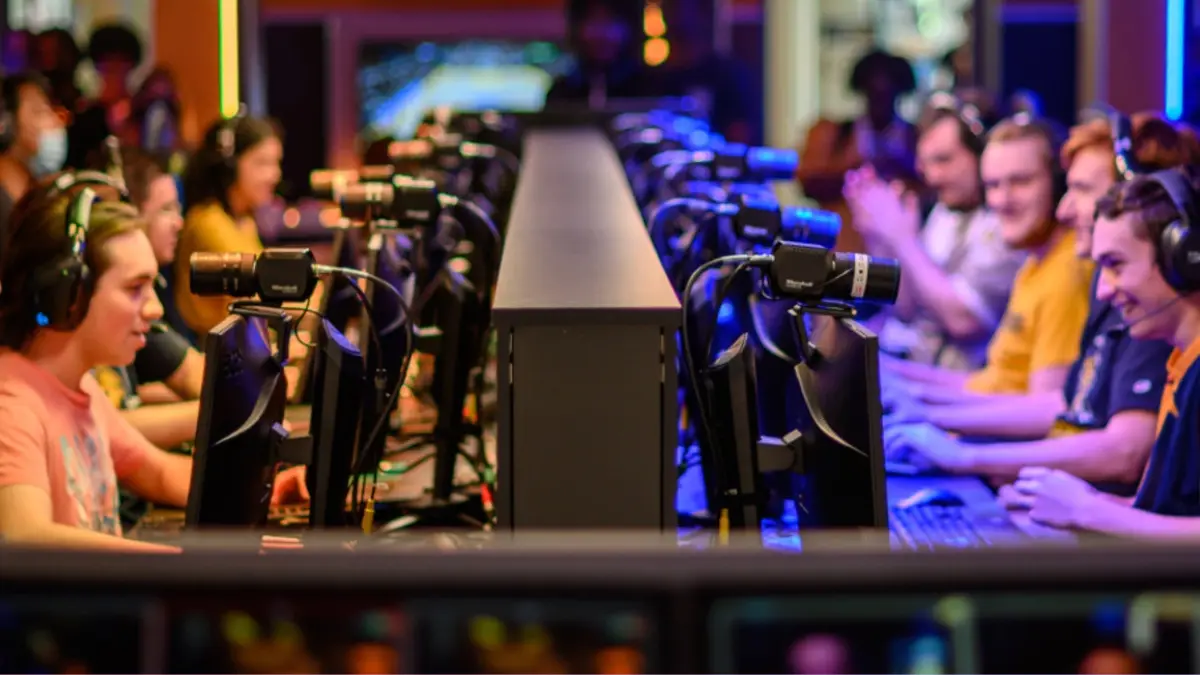Esports’ franchise era has hit a wall. In January 2024, Blizzard confirmed that the Overwatch League was officially dead after teams voted to exit its franchise model. Activision Blizzard then laid off the majority of its Call of Duty League esports staff following Major I in Boston, leaving just a skeleton crew on standby.
Between 2019 and the start of 2025, Activision Blizzard and Microsoft’s gaming divisions shed roughly 3,600 employees—a sign of broader cost cuts across corporate esports. Riot Games also cut over 600 jobs, shut down its Riot Forge publishing arm, and canceled the Riot Esports Network in the past two years.
Meanwhile, Riot’s North American League of Legends Championship Series Spring Split has lost 63 percent of its average viewership over five years, sliding from 176,000 in 2021 to just 66,000 in 2025.
Away from glossy studios, a different scene is thriving on campus and in local hangouts. Esports clubs are spreading like wildfire through college campuses, turning gyms and student unions into packed arenas. The National Association of Collegiate Esports has grown into the premier varsity esports network in North America, with member programs at dozens of universities.
Student-run organizations—from grassroots LAN nights to fully chartered campus clubs—are now the lifeblood of competitive gaming. If big-budget leagues are showing their cracks, community esports is building something new from the ground up.
Big-budget leagues start to crumble
In late 2023, a majority of Overwatch League team owners openly questioned the value of $20 million franchise slots, and Blizzard announced a pivot away from its original model. The Call of Duty League soon followed, scaling back its ambitious home-and-away schedule after sponsors failed to meet promised commitments.
By early 2024, Riot Games publicly acknowledged that the LCS had fallen short of growth targets and announced a renewed emphasis on grassroots development alongside its professional circuit.
These strategic retreats revealed a shared realization: pouring tens of millions into league infrastructure did not guarantee fan engagement or long-term sustainability. What looked unstoppable on paper began to feel out of touch with the audiences those leagues were meant to capture.
Corporate esports had bet on scale and polish—and the bets didn’t pay off. Clubs, sponsors and fans started looking elsewhere.
The viewership reversal
Since 2021, professional esports leagues have encountered a steady decline. For example, peak viewership for the LCS finals dropped by roughly 20%, from 593,554 in 2024 to 509,010 in 2025.
Meanwhile, collegiate and community-driven events are gaining momentum: university leagues now fill student unions, grassroots LANs regularly sell out local venues, and streamer-hosted competitions such as Ludwig’s Streamer Games peaked at 175,539 concurrent viewers in 2024. Fans are gravitating toward authentic competition—whether it’s campus pride or creator-led showmatches—that values passion over production budgets.
Valorant’s Red Bull Campus Clutch further underscored the trend. Its global university tournament hit peaks above 40,000 concurrent viewers on Twitch, outpacing mid-tier VCT regional qualifiers. Fans tuned in to watch their classmates and campus rivals, drawn by the authenticity of student-casters and the thrill of school pride rather than polished production packages.
Even smaller LANs are making noise. Fragadelphia 15, a North American CS:GO open LAN series, logged a peak of 1,755 concurrent viewers on its Twitch channel despite access to marketing funds like the professional leagues. These modest numbers rival or exceed the live streams of some franchise “home and away” matches that struggle to fill seats and hit viewership targets.
Taken together, these trends illustrate that engagement now follows passion, not budgets. Collegiate championships, campus-run Valorant events and grassroots LANs are routinely matching—or beating—franchise viewership, proving that relatable competitors and local communities carry more weight with viewers than big-name brands or high-gloss broadcasts, especially relative to the budgets they operate on.
The sponsorship revolt
Franchise advertising once meant banner ads in stadiums and six-figure team deals as major brands like HP, Intel and Mercedes-Benz used esports to reach mass audiences. Elgato’s sponsorship criteria now emphasize personality and audience fit over raw follower counts, evaluating each request on a case by case basis rather than issuing blanket deals.
GamerSupps invites creators to partner based on the value they bring, offering flexible discount codes and the freedom to tailor content for their own audiences.
MarketScale reports that sponsors now gain clearer, measurable ROI by running tailored campaigns and engaging directly with niche audiences. According to Shikenso, this represents the latest phase in esports sponsorship evolution, where engaged communities have become more prized than sheer reach.
Mid-sized streamers can sustain their channels through smaller, steady sponsorships, making authenticity a reliable revenue stream. Rogue Energy confirms that cultivating a genuine community remains the top strategy for securing partnerships in 2024.
Lean-and-mean infrastructure wins
Collegiate and grassroots esports thrive on shoestring budgets. Uni Esports Group reports that universities can launch varsity programs with startup costs as low as $36,000—covering equipment, uniforms and basic facilities.
In stark contrast, Overwatch League teams paid roughly $20 million just to secure franchise slots, with expansion buys up to $35 million. Beyond those initial fees, community clubs avoid high annual payrolls and arena leases by tapping into student volunteers and existing campus spaces.
More than 200 colleges now host varsity esports programs, each leveraging dorm basements, student unions or repurposed classrooms for practice and broadcasts. Student organizers often source high-performance PCs and streaming gear via in-kind donations or sponsor partnerships, trimming capital expenses.
These lean operations still deliver near-professional-grade experiences. At the University of Massachusetts Dartmouth, a CDW-sponsored center boasts industrial-grade desks, high-refresh-rate monitors, and a dedicated broadcast studio—all managed by student staff.
When students run everything from casting and broadcast to social media, savings flow directly into larger prize pools and deeper local engagement. Grassroots organizers can reinvest revenues immediately, fostering sustainable growth without the risk of million-dollar sunk costs.
This approach yields agility. Community teams can pivot game titles, modify formats or scale events in days rather than months—unburdened by full-time staff commitments or multi-venue contracts. Lean infrastructure is not ideal but it certainly provides a competitive edge.
Student-run success stories
Some of the brightest stars in esports today aren’t backed by venture capital or billion-dollar publishers. They’re powered by student volunteers, streaming setups in dorm basements and the relentless drive of community organizers.
Maryville University’s League of Legends program has become a benchmark for collegiate success. Full-ride scholarships attract top talent, and their Spring 2025 roster clinched many 1st place wins as well as the Collegiate Valorant Championship. Their Twitch channel consistently sees five-figure peaks, proving that campus pride translates directly into engagement, especially when they have access to infrastructure and budget from their university.
Sun Devil Gaming (Arizona State University) operates without salaried staff or direct school funding. In 2024, SDG’s all-student rebrand unified 15+ varsity and community teams under a single identity. The result: increased revenue and engagement, better competitive results and two consecutive EsportsU Club Impact Awards and many nominations beyond. Their Overwatch squad cracked the national Top 10 according to OWCRA—all while members balanced classes and part-time jobs.
Moist Global and Tectone Events demonstrate how individual creators can outperform pro leagues relative to their budgets, which are often a fraction of the cost. By rallying small but passionate followings—often fewer than 5,000 concurrent viewers—they’ve hosted tournaments with prize pools under $10,000 that match or exceed pro league engagement metrics.
These underdogs share a common thread: they built their programs from the ground up, leveraging authenticity, student leadership and lean operations. Their success stories set the stage for a seismic shift in how esports thrives—and who gets to call themselves champions.

Corporate wake-up call and hybrid futures
After grassroots events upended viewership and engagement, major publishers have begun integrating community-driven formats into their pro ecosystems. In June 2024, Riot Esports unveiled a slate of 2025 enhancements—including a third international tournament, guest-team slots via promotion-relegation and unified multi-region splits—to boost both excitement and financial sustainability.
Riot went further with Game Changers Rising, its inaugural program to build a competitive ecosystem for women across the EMEA region. This initiative brings publisher support and production resources to community-centric tournaments without the burden of full franchise buy-ins.
Sony has followed suit with PlayStation Tournaments: XP, a series of global qualifiers leading into a live London finals. The model blends open, online competition with a high-profile event, giving amateur players a clear pathway to a corporate-backed stage.
On the collegiate side, the National Association of Collegiate Esports continues to expand its reach through hybrid conventions and recruiting events. Its partnership with SPIN will host both in-person and virtual showcases for high school and transfer students eyeing varsity esports programs.
These hybrid experiments mark a turning point: publishers and institutions are embracing authentic, community-first competition while applying professional production standards. The result promises events that capture the spirit of grassroots play and the polish of corporate backing—setting the stage for a more inclusive, sustainable future in esports.
How to support grassroots esports
Whether you’re a player, a fan, or a brand, there are plenty of ways to fuel this community-first revolution and to benefit from it. At the most basic level, joining or starting a campus club is still the easiest entry point.
Most schools already have esports societies tucked inside student government, and the tools are simple: Discord servers, OBS setups, and a spare classroom or union hall can quickly turn into scrim hubs, watch parties, or even mini-tournaments. Groups like the National Association of Collegiate Esports have made the process easier with governance guides and event templates that help student leaders get off the ground fast.
Local LANs are another heartbeat of the scene, and they thrive on volunteers. Showing up to help with setup, broadcast, or casting not only keeps events running but also puts you in direct contact with emerging players and organizers. A packed room drives momentum; it convinces sponsors and media that there’s something real worth paying attention to.
Supporting the people behind the streams matters just as much. Following and subscribing to student-run channels, dropping into Twitch chat, or sharing clips on social feeds has an outsized impact. For small streamers, every new follower or donation feels tangible, and authentic word-of-mouth spreads faster than any ad buy.
Brands, meanwhile, are rethinking how they show up in this space. Instead of chasing impressions, companies are starting to back niche audiences with gear loans, co-branded merch, or prize-pool boosts. These tailored partnerships allow them to connect directly with communities where the ROI is clearer and the costs are lower.
And while grassroots will always be about authenticity, there’s growing momentum behind hybrid models that mix community spirit with pro polish. Imagine a national esports “world cup” that starts with open qualifiers but culminates in a showcase event alongside established pros. Those kinds of collaborations could create experiences that neither grassroots clubs nor corporate leagues could pull off on their own.
What’s next for community esports
Looking forward, expect publisher involvement to tilt toward open tours and revenue-share programs rather than rigid franchises. Varsity status for collegiate programs could soon mean scholarships, academic credit, and long-term stability. And with global networks like Smash.gg and Battlefy scaling across borders, we’re inching toward international college circuits that feel like miniature pro leagues.
The future of esports ultimately belongs to those who build it. Whether you’re casting from a dorm room or cheering in a campus union, your passion is the engine that will drive the next era of competitive gaming.

